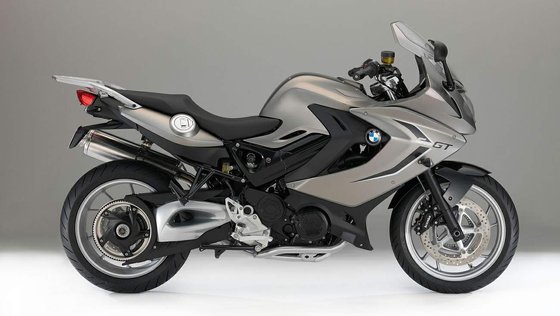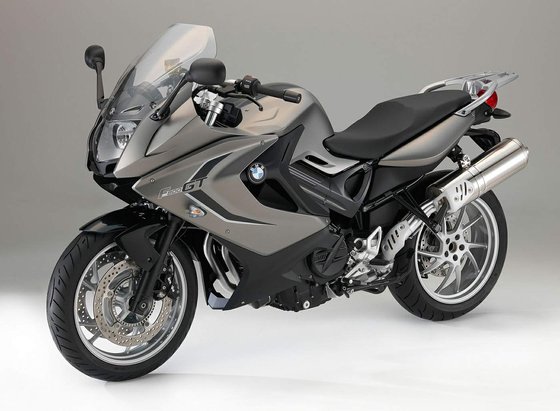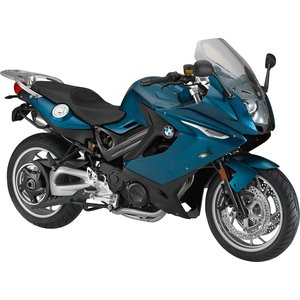BMW F 800 GT (2016-2018): The Refined Sport Tourer That Balances Thrills and Practicality

Introduction
The BMW F 800 GT represents a sweet spot in the sport-touring world – a motorcycle that refuses to compromise between spirited performance and everyday usability. Built for riders who crave winding roads but also value comfort during long hauls, this 2016-2018 generation model refines BMW's middleweight touring philosophy with precision. After spending time with this machine, it’s clear why it remains a compelling choice for riders seeking a "do-it-all" companion that won’t intimidate at every fuel stop.
Riding Experience: Where Sport Meets Touring
Engine Performance: Smooth Operator
At the heart of the F 800 GT lies a 798cc liquid-cooled parallel twin, producing 90 HP at 8,000 RPM and 86 Nm (63.4 lb-ft) of torque at 5,800 RPM. These numbers translate to real-world usability – the engine pulls strongly from 3,500 RPM without vibes intruding through the grips, thanks to its counterbalancer. The belt drive (a rarity in this segment) ensures buttery-smooth power delivery, making it feel more refined than chain-driven competitors.
Cruising at 120 km/h (75 mph) in sixth gear sees the tacho hovering around 5,000 RPM, leaving plenty in reserve for overtakes. While the claimed top speed of 200 km/h (124 mph) isn’t class-leading, the F 800 GT’s strength lies in its relaxed highway demeanor. The Ride-by-Wire throttle (introduced in 2017 models) adds precision, especially when switching between Rain and Road modes – the former softening throttle response for slippery conditions.
Handling: Confidence in Corners
BMW’s chassis geometry – a 25.8° rake and 91.6 mm (3.6 in) trail – strikes a balance between agility and stability. The 43mm Marzocchi fork and preload-adjustable rear shock handle everything from broken tarmac to aggressive lean angles. During testing, the bike tipped into corners eagerly, its 214 kg (472 lbs) wet weight feeling lighter mid-corner.
The 120/70-ZR17 front and 180/55-ZR17 rear tires provide ample grip, while the dual 320mm front discs (with 4-piston calipers) deliver strong, predictable stopping power. ABS intervention is seamless, never feeling intrusive during hard braking.
Comfort: Touring DNA Shines
The adjustable windscreen (manually tuned for height) deflects wind effectively for riders up to 183 cm (6’0”). The seat, adjustable between 765-820 mm (30.1-32.3 in), accommodates shorter riders without sacrificing thigh support. After three hours in the saddle, fatigue was minimal – a testament to the upright ergonomics and vibration-free handlebars.
Passengers benefit from generous footpeg placement and a well-padded pillion seat. With optional panniers (35L capacity each), this BMW transforms into a weekender’s dream.
Design & Features: Form Follows Function

Aesthetic Evolution
The 2016-2018 F 800 GT sheds its predecessor’s conservatism for sharper lines. The Gravity Blue Metallic Matt and Light White color schemes emphasize its sporty profile, while the blacked-out engine and matte finishes hide road grime impressively. The single-sided swingarm isn’t just eye candy – it simplifies rear-wheel maintenance during tire changes.
Tech & Practicality
The analog-digital dash provides clear readouts, including gear position and fuel range. While lacking flashy TFT displays, it’s legible in direct sunlight – a touring essential. The 2017 update added a Malfunction Indicator Light (MIL) and refined the riding mode display.
Storage-wise, the 15L fuel tank (3L reserve) delivers a 350-400 km (217-248 mi) range, though rivals offer larger capacities. The under-seat compartment fits a U-lock or documents, but real luggage requires BMW’s optional cases.
Competition: How the F 800 GT Stacks Up
Yamaha Tracer 900 (2016-2018)
Yamaha’s CP3 triple engine offers more character and 115 HP, but the Tracer’s taller stance and chain maintenance make it less refined for touring. The BMW counters with better wind protection and a lower seat height.
Honda VFR800F (2014-2017)
Honda’s V4 delivers intoxicating sounds and 106 HP, but its 25 kg (55 lbs) weight penalty and dated shaft drive feel less nimble. The F 800 GT’s belt system and fuel efficiency (4.3L/100km vs Honda’s 5.5L) appeal to cost-conscious riders.
Triumph Tiger 800 XRx (2015-2018)
Triumph’s ADV-styled tourer boasts superior off-road capability and a 94 HP triple, but its 19” front wheel dulls on-road precision. The BMW’s sport-tuned suspension and road-focused ergonomics make it the better tarmac tourer.
Verdict: The F 800 GT excels for riders prioritizing low-maintenance touring (belt drive), all-day comfort, and handling precision over outright power.
Maintenance: Keeping Your GT in Prime Shape

Key Service Intervals
- Oil Changes: Every 6,000 km (3,728 mi) using SAE 15W-50 (3L with filter). Consider MOTOPARTS.store’s synthetic blends for extended intervals.
- Belt Inspection: Check every 12,000 km (7,456 mi) for cracks. Replace at 36,000 km (22,369 mi) – our Gates Carbon Drive kits offer OEM reliability at better value.
- Brake Fluid: Flush DOT 4 every two years. Upgrade to high-temperature pads for aggressive riding.
- Coolant: Replace every 48,000 km (29,825 mi). Use silicate-free formulas to protect aluminum components.
Common Upgrades
- Windshield: The stock screen suffices up to 130 km/h (81 mph). For taller riders, our +5” touring screen reduces buffeting.
- Seat Comfort: Gel inserts or a heated seat (plug-and-play harness available) enhance long-day comfort.
- Exhaust: While the stock silencer meets EU-4 norms, our slip-on options shed 3.2 kg (7 lbs) and amplify the twin’s growl.
Troubleshooting Tips
- Cold Starts: If the engine hesitates below 5°C (41°F), clean the throttle bodies and update the BMS-K+ ECU software.
- ABS Sensors: Wipe debris from wheel sensors periodically to prevent false activation.
- Battery Care: The 12 Ah YTX14-BS battery benefits from a trickle charger during winter storage.
Conclusion: A Tourer That Rewards Skill
The BMW F 800 GT isn’t about dominating spec sheets – it’s about delivering a polished, rider-focused experience. Whether carving alpine passes or commuting through urban sprawl, this machine remains composed. While newer models boast more tech, the 2016-2018 generation’s simplicity and proven reliability make it a smart buy for pragmatic enthusiasts.
At MOTOPARTS.store, we’re committed to keeping your F 800 GT running like new. From OEM-spec filters to performance upgrades, our curated selection ensures your BMW ages as gracefully as it rides.



Specifications sheet
| Engine | |
|---|---|
| Stroke: | Four-stroke |
| Max power: | 66 kW | 89.0 hp |
| Max torque: | 86 Nm |
| Fuel system: | Electronic fuel injection, ∅45mm throttle bodies (BMS-K+) |
| Lubrication: | Dry sump |
| Max power @: | 8000 rpm |
| Displacement: | 798 ccm |
| Max torque @: | 5800 rpm |
| Bore x stroke: | 82.0 x 75.6 mm (3.2 x 3.0 in) |
| Configuration: | Inline |
| Cooling system: | Liquid |
| Compression ratio: | 12.0:1 |
| Number of cylinders: | 2 |
| Valves per cylinder: | 4 |
| Dimensions | |
|---|---|
| Wheelbase: | 1514 mm (59.6 in) |
| Dry weight: | 206 |
| Wet weight: | 214 |
| Seat height: | 765–820 mm (30.1–32.3 in) |
| Overall width: | 905 mm (35.6 in) |
| Overall height: | 1248 mm (49.1 in) |
| Overall length: | 2156 mm (84.9 in) |
| Fuel tank capacity: | 15.0 L (3.96 US gal) |
| Reserve fuel capacity: | 3.0 L (0.79 US gal) |
| Drivetrain | |
|---|---|
| Clutch: | Multiplate in oil bath, mechanically operated |
| Final drive: | belt |
| Gear ratios: | 1st 2.46, 2nd 1.75, 3rd 1.38, 4th 1.17, 5th 1.04, 6th 0.96:1 |
| Transmission: | 6-speed |
| Final drive ratio: | 1:2.6 |
| Maintenance | |
|---|---|
| Battery: | YTX14-BS |
| Engine oil: | SAE 15W-50 |
| Idle speed: | 1250 ± 50 RPM |
| Brake fluid: | DOT 4 |
| Spark plugs: | NGK DCPR8E, NGK DCPR8EIX |
| Spark plug gap: | 0.8–0.9 mm |
| Coolant capacity: | 1.0 |
| Engine oil capacity: | 3.0 |
| Engine oil change interval: | Every 5000 km or 2 years |
| Valve clearance (intake, cold): | 0.10–0.20 mm |
| Valve clearance check interval: | 24,000 km (15,000 mi) |
| Valve clearance (exhaust, cold): | 0.20–0.30 mm |
| Recommended tire pressure (rear): | 2.9 bar (42 psi) |
| Recommended tire pressure (front): | 2.5 bar (36 psi) |
| Additional Features | |
|---|---|
| ABS: | Standard |
| Exhaust: | Stainless steel with EU-4 compliance |
| Riding modes: | Rain, Road (Dynamic mode optional) |
| Frame materials: | Cast aluminum |
| Traction control: | Optional ASC |
| Suspension adjustment: | Optional ESA (Electronic Suspension Adjustment) |
| Chassis and Suspension | |
|---|---|
| Rake: | 25.8° |
| Frame: | Bridge-type aluminum, load-bearing engine |
| Trail: | 91.6 mm (3.6 in) |
| Rear tire: | 180/55 z-17 |
| Front tire: | 120/70 z-17 |
| Rear brakes: | Single 265 mm disc, 1-piston caliper (ABS standard) |
| Front brakes: | 2 x 320 mm discs, 4-piston calipers (ABS standard) |
| Rear suspension: | Single-sided swing arm, central spring strut, hydraulically adjustable preload, rebound damping |
| Front suspension: | 43mm telescopic fork, 125 mm (4.9 in) travel |
| Rear wheel travel: | 125 mm (4.9 in) |



















